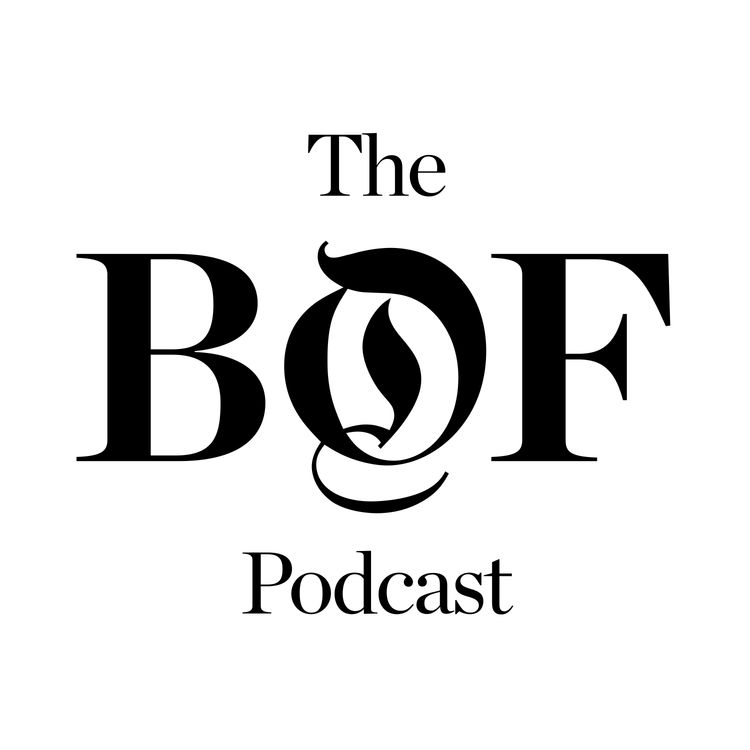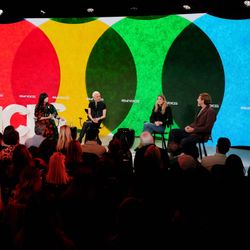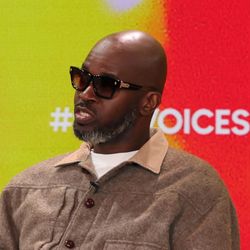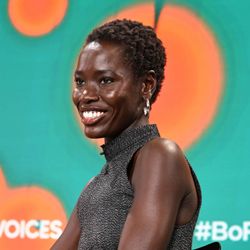Share

The Business of Fashion Podcast
How Calvin Klein Taps Into Culture
On January 4th of this year, when Calvin Klein dropped its new spring 2024 campaign with a shirtless Jeremy Allen White wearing the brand’s signature underwear, it set the internet ablaze. Social media feeds flooded with reaction videos and media outlets covered the campaign widely. The following week, Calvin Klein saw a 30 percent year-over-year increase in underwear sales.
While the brand could never have predicted the gigantic response the campaign would generate, Calvin Klein’s chief marketing officer Jonathan Bottomley says the brand did everything it could to put the strategy in place for it to do so.
“In a culture that's very flat, how do you create those spikes … we adopt what we call an entertainment mentality,” said Bottomley on stage at the BoF Professional Summit in New York.
This week on The BoF Podcast, BoF founder and editor-in-chief Imran Amed sits down with Bottomley to unpack Calvin Klein’s marketing strategy and how they cut through the noise to create cultural moments.
Key Insights:
- Calvin Klein’s entertainment mentality can be broken down into three main parts. “Firstly, we put a lot of focus on creating stories and creating content that people are going to want to spend time with. The second thing is we think really hard about the talent, not just in terms of reach of engagement, but the opportunity to create a cultural character, show them in a way that maybe you haven't seen before,” Bottomley explains. “And then the third thing is media. We work with real intention to blend the media mix, to try and game the algorithm and and really to cut through.”
- Bottomley stresses that the brand does not aim to court controversy. “There's an authenticity to what we do, which is partly the DNA as a brand. This idea of sensuality and empowerment, they go together,” he says. “It's much more to do with partnership, creative expression, and this idea of a character that we feel is going to work, but that our partner really believes in.”
- On balancing brand marketing and performance marketing, Bottomley believes the two are intertwined. “The way we think about it is that everything is brand and everything is performance. … The imperative of a brand is to lead and to say from within the confines of where culture is going, ‘how can we step outside that and excite people with something?’”
Additional resources:
- Calvin Klein, Levi’s and the Real Value of Marketing
- Why Calvin Klein Ads Still Get People Talking
- Calvin Klein’s New Strategy: Don’t Market the Dream, Market What Sells
More episodes
View all episodes

How Willa Bennett Is Reimagining Magazines for a Social-First Generation
40:49|Willa Bennett is the editor-in-chief of Cosmopolitan and Seventeen — two of the most influential legacy media brands now being reimagined for a social-first, creator-driven era.Bennett grew up in Los Angeles, trained as a ballerina and studied journalism at Sarah Lawrence before building a standout career at Bustle Digital Group, GQ and Highsnobiety. Along the way, she’s helped redefine how youth culture is covered — not by chasing everything, but by sharpening point of view, taste and authority.“This generation has access to everything,” says Bennett, “which is exactly why there’s a real hunger for curation, real taste and a voice you can trust.”This week on The BoF Podcast, Imran Amed, founder and CEO of The Business of Fashion, sat down with Bennett to talk about what young audiences actually want from media today, why curation matters more than ever and how she’s refocusing Cosmopolitan and Seventeen — creatively, culturally and commercially — for the next generation.Key Insights: Bennett cold emailed her way into Seventeen, two weeks after graduating in 2013. Spotting social’s potential before it was prized, she asked: “Can I post the cover on Instagram?” and was told, “Yeah, sure – no one’s going to see it.” Later stints at Bustle and GQ sharpened her point of view, with a breakthrough at Highsnobiety. Putting Billie Eilish on her first cover of Highsnobiety “was so intuitive,” she says, and it was a signal she could match youth culture with editorial authority.Bennett argues the job of legacy media is selection, not saturation. “This generation has access to so much online, but that also means that there is a real hunger for curation – and real curation, not performative curation,” she says, adding that Cosmopolitan’s remit is to be “a place that young people can trust when it comes to love and relationships.”After an era of chasing scale, Bennett sees a return to meaningful, well-made stories: “We’re seeing real editorials again,” she says, while also noting Cosmopolitan’s social focus: “We’re up 500 percent year over year just in views on Instagram … That prioritisation of social media has been really important.”Bennett’s advice to new journalists is to publish everywhere while honing a distinctive point of view. “Use all the platforms now … get your voice out and really cultivate it,” she says. “As we figure out what this new era is, I think it’ll be even more important to have a very distinct point of view.”Additional Resources:Willa Bennett | BoF 500 | The People Shaping the Global Fashion Industry Inside Willa Bennett’s First Issue of ‘Cosmopolitan’ | BoF
Saks’ Bankruptcy and the Future of Luxury Retail
22:21|Saks’ bankruptcy was widely expected, yet still felt like a shock to the fashion system. The department store giant’s Chapter 11 filing outlines $1.75 billion in restructuring finance and $3.4 billion owed to as many as 25,000 creditors – including $136 million to Chanel alone. Who will get paid, and what Saks looks like at the other end of the bankruptcy process, is an open question. Former Neiman Marcus chief Geoffroy van Raemdonck will lead the reset. As BoF’s retail editor Cat Chen puts it, Saks will need to “shrink in order to grow,” curb discounting, and rebuild trust through clienteling and service.Key Insights:Missed vendor payments undermined confidence in Saks Global soon after it acquired Neiman Marcus and Bergdorf Goodman. “Even after Saks created these new payment terms, they weren’t able to stick to their instalments,” Chen says. Labels “stopped shipping to Saks entirely,” creating “a death spiral where Saks wasn’t getting good inventory, and this hurt their ability to attract customers,” and sales slid further.When Saks Global acquired Neiman Marcus, both companies were extremely levered going in, with savings being swallowed by interest. The plan pitched $500 million in cost savings, but Saks Global took on more debt — $2.2 billion in bonds. As Chen explains, with margins in multi-brand retail already slim, “they were ill-fated because… a chunk of whatever sales or savings they were able to generate would be going toward interest payments.” As Saks has 10,000 to 25,000 creditors, owed $3.4 billion, bankruptcy court will approve a list of critical vendors that are essential to Saks’s business. While conglomerates will cope, “it's really the smaller independent brands that might be owed less money, but the amount that they're owed are just so much more critical to their business operations. These are the players that are the most vulnerable right now,” Chen warns — and it’s not just brands. A model shared she’s “owed $46,000...and can’t pay rent now.”Now, Saks must reset its business. Van Raemdonck “took Neiman Marcus in and out of bankruptcy,” yet Chen is blunt about the reality of the situation: “Saks Global will have to shrink in order to grow.” That means closing stores, stabilising cash flow and getting ruthless about discounting. From there, Chen says Saks has to compete on experience, delivering the best customer service and catering to their VICs. Additional Resources:Saks Global Files for Bankruptcy After Monthslong Hunt for Cash | BoF Chanel, Gucci and Capri Holdings: The Brands Topping Saks’ Creditor List | BoF
Inside Beauty’s 2026 M&A Pipeline
20:21|2026 opens with real movement in beauty deals. As first reported by The Business of Beauty, Estée Lauder is exploring a packaged sale of Too Faced, Smashbox and Dr. Jart to free up cash and refocus the portfolio. Who’s next? Colour fatigue is depressing makeup valuations, while fragrance, bodycare and haircare are drawing the most credible buyer interest, particularly from beauty conglomerates. Executive editor of The Business of Beauty, Priya Rao joins Brian Baskin and Sheena Butler-Young to unpack what this year of beauty deals has to offer. Key Insights:With Estée Lauder exploring a bundled sale of Too Faced, Smashbox and Dr. Jart, this portfolio reset signals a valuation reality check. The goal is to free up cash and refocus on culturally relevant, digital-native brands like The Ordinary and Le Labo. As Rao notes, “Deciem sells more skincare products than all of Estée Lauder’s other skincare brands combined,” and “Le Labo is also continuing to be on fire, even though Santal 33 has been around for 15 years.” Colour fatigue is depressing valuations in makeup. Over the past few years, artistry and colour brands have gone to market to find a buyer, but quickly found a landscape already flooded with similar offerings. “There were so many colour brands on the market. People were waiting for the next great one, so they weren’t willing to make a bet on any of these brands until the full slate was out,” says Rao. The result was some colour brands being left in the market, on and off, for over a year. She explains: “It’s kind of like buying a house – why am I going to buy this house at a premium when I could be buying at a discount?”Fragrance, meanwhile, remains a booming, high-margin lane. “All these other beauty businesses – hair care, body and fragrance – are more incremental to a strategic,” says Rao. While private equity is trying across the board, Rao advises that “if you want L’Oréal, LVMH or Estée Lauder, you have to be in categories that add incremental value, rather than ones they’re still trying to figure out.”Haircare offers the clearest near-term upside for acquirers. “Amika has the number one or number two dry shampoo at Sephora,” and its move into Ulta taps “a huge haircare business because of their back bar program”, says Rao. In mass hair care, Not Your Mother’s, which has had its longevity questioned in the past, shows durability and runway. Focused on styling and texture, Rao notes that it “hasn’t even played with shampoo and conditioner yet – in mass hair care, that’s where you play to make the big bucks.”Additional Resources:Exclusive: Estée Lauder Companies Has Put Three Brands Up for Sale | BoF Prestige Hair Care’s Shampoo Problem | BoF Why Fragrance Is the Latest Red Carpet Accessory | BoF
Examining 20 Years of Fashion’s Influencer Economy
28:11|What began as scrappy self-publishing has become a finely tuned industry machine. Influencing is now big business. Four of the industry’s most influential creators came together at BoF VOICES 2025 to take a hard look at what influencing has become — and where it should go in the future. Susanna Lau opens the conversation by ditching the earnest tropes and asking a harder question: how can creators keep their integrity as agencies, briefs and budgets multiply?Bryan Yambao reflects on the pre-iPhone “wild west” — scanning magazines, posting affiliate links from his bedroom in Manila, and the shock of realising that the people he wrote about were suddenly reading him.Camille Charrière charts the shift from “do your thing” freedom to 30-page briefs and layered gatekeepers, arguing that creators must push back to preserve the audience trust that made them valuable in the first place.And through the lens of satire, Gstaad Guy challenges brands to confront what their communities are already saying — before they say it out loud.Together, they interrogate luxury’s malaise — and the need to recalibrate the industry around craft, community and credibility.Key Insights: Even with industry recognition, Yambao still feels like an outsider and uses that distance to stay candid. “I still feel like I’m an outsider,” he says, recalling the early days: “There was no roadmap. All I knew was that I had a voice.” The monetisation that followed, from early affiliate cheques to today’s industrialised commerce media, only reinforced his responsibility. “Since I kind of have a seat [at] the table, I want to say things with meaning and hold people to a higher standard,” he says.Charrière argues creators aren’t brand billboards — they’re people with convictions, and audience trust depends on that. After a year of speaking out, she recalls a major house “got me on a call with seven lawyers saying that now in my contract it was going to be written that I had to be neutral politically because I’d gone to a protest.” She continues, “I said, absolutely not.I’m not a brand. I’m an ambassador for you, but we are people, we are not brands … my online self is an extension of my offline self.”Gstaad Guy argues that credibility now depends on pre-empting audience scepticism. “Consumers are getting smarter, products are getting dumber,” he says. The remedy is to meet somewhere in between and let creators use their own language to test narratives honestly: “Have someone like [me] say something first so you can tell the story … the language of comedy and satire allows for that to be more digestible,” he says.Additional Resources:Susanna Lau, Bryan Yambao, Camille Charrière and Gstaad Guy: Twenty Years of the Influencer Economy in Fashion | BoF Gstaad Guy | BoF 500 | The People Shaping the Global Fashion Industry Camille Charrière | BoF 500 | The People Shaping the Global Fashion Industry Bryan Grey Yambao | BoF 500 | The People Shaping the Global Fashion Industry
The Themes That Will Define the 2026 Fashion Agenda
25:24|BoF and McKinsey’s annual State of Fashion report finds the industry entering 2026 with caution: 46 percent of executives expect conditions to worsen, citing geopolitics, macro volatility and the risk of shoppers pulling back. Yet there is also a pulse of optimism around AI-driven efficiency, luxury’s creative recalibration and fresh consumer interest in categories from smart glasses to fine jewellery.Tariffs remain the dominant near-term swing factor. Brands mitigated pain in 2025 by pulling forward inventory, but as that cushion runs out, the full impact shows up in 2026 in costs and pricing. More broadly, luxury’s era of price-led growth has run its course; as BoF correspondent Marc Bain puts it, if you ask customers to pay more, you have to “actually offer the value for the price.”Key Insights:The mood has shifted from “uncertain” in 2025 to “challenging” in 2026. Companies feel better equipped but are bracing for a tougher year. “Uncertainty was ‘we don’t know what’s going to happen’. The challenge is, we know what is going to happen and it’s going to be tough,” says Bain.Tariffs will continue to bite in 2026, and price hikes will be part of the playbook. Brands used a mix of mitigation tactics in 2025, but many still expect to pass on costs. “The strategy that the highest number of executives said was their way of mitigating the tariff impact was raising prices,” Bain notes. “To some degree, there's just no way around that. You can do it strategically, but at some point you're probably going to have to raise prices.”Jewellery is the consumer bright spot for the year ahead, as the category has steadily outperformed thanks to steadier, more gradual price rises, exciting design and a strong perception of value retention. “It’s hard luxury… you can wear it a lot and it can still be in good shape,” Bain says, adding that more women self-purchasing are reinforcing demand, with maximal accessories over minimal wardrobes adding another tailwind. He adds, “It sounds almost silly in 2026, but a big shift has been that more women are actually buying jewellery for themselves.According to Bain, 2026 is the year AI gets embedded into the fashion ecosystem. Expect a ‘two steps forward, one step back’ year where efficiency wins drive adoption even as mishaps make headlines. “Companies don’t feel like they can sit out AI,” Bain says. “It’s not like everyone by the end of next year is going to be using ChatGPT instead of Google, but the expectation is it'll be a significantly higher number than [2025]. And at a certain point, even if it's 5 percent of shoppers … it's still enough that you as a business have to start accounting for it. Additional Resources:The 10 Themes That Will Define the Fashion Agenda in the Year Ahead | BoF The Perfect Package: What It Takes to Be a Fashion Leader in 2026 | BoFThe Top Trends That Will Define Beauty in 2026 | BoF
DJ Black Coffee on Breaking Barriers and Building Global Credibility
26:50|A DJ from South Africa who survived a life-altering accident on the night of Nelson Mandela’s release, Black Coffee has gone on to headline the world’s biggest stages. At BoF VOICES 2025, he reflected on building global credibility — and on reshaping how the African continent is seen. “If you Google a picture of Africa … it’s not going to be the most positive picture you see,” he says. “To be a DJ in South Africa, it’s one of the toughest things because almost every DJ is amazing. To be a DJ on the global level is way tougher because I come from a continent that was — or maybe still is — not seen as how it truly is.” In conversation with BoF founder and CEO Imran Amed, Black Coffee talk about rejecting pigeonholes, earning trust on a global level, and opening doors for the next generation. Key Insights: To compete beyond South Africa, Black Coffee says he had to work on the music and the optics of Africa on the global stage. The solution was rigorous self-presentation: “Whilst I was growing as a brand, fashion played a very big role for me. I was very conscious of how I presented myself,” he says. “The bigger the brand, the more intentional I was. It took a lot of work.” That mix of sound, style and discipline underpinned his transition from local star to international headliner.The night Nelson Mandela walked free changed his life forever. Struck in a crowd by a taxi and left with a nerve damage injury, he channelled his recovery into music and silence into resolve. “[Mandela’s] release from jail marked the beginning of a different journey for me, the first day of the beginning of Black Coffee,” he says. Speaking publicly about the accident only years later, he refused pity and insisted on being seen first as a musician with “passion and love for music.”Black Coffee is blunt about structural bias. “At the Grammys, instead of giving Tyla a number-one pop award, they will create a new genre or category where it’s best African,” he says. Reflecting on his own experience at the BET Awards, he recounts: “We were all given our awards on Friday and we were not invited on the main show on Saturday.”His advice to young creatives is simple and radical: “Just listen to your voice. That voice is the voice that will make you the greatest.” The mission is not only visibility but parity – moving African talent from a side-room to the main stage.Additional Resources: BoF VOICES 2025: Creativity as a Vehicle for Connection Black Coffee| BoF 500
Awar Odhiang on Joy, Inclusion and Her Viral Chanel Moment
26:25|Born to South Sudanese parents and raised in Canada after arriving as refugees in 2002, Awar Odhiang grew up far from fashion’s orbit. She was studying health sciences and planning a career in medicine, when she was scouted at her first job. Her career began locally in Calgary, then accelerated fast after she launched internationally in 2019 — with early runway breaks, a packed show schedule and global campaigns. Then came the moment that stopped the industry when she closed the most-watched debut of the season at Matthieu Blazy’s Chanel show in October.“The moment that really allowed me to fill that space in that way was the freedom that I was given, truly,” she says. Backstage, Matthieu Blazy, Chanel’s new creative director encouraged her to own the moment. “I just felt so free, so confident, so beautiful. You can tell Matthieu loves women just by his designs.”In this conversation from BoF VOICES 2025, I speak with Awar about the gap between being celebrated publicly and understood privately, why inclusion has to extend to behind the camera and the boundaries she is setting to protect her sense of joy in an industry that rarely slows down.Key Insights:Odhiang recounts meeting agent Kelly Streit whilst working her first job in retail and her scouting story captures a pivotal shift in self-belief. “That was a moment that now I can look back at and realise that he believed in me before I even believed in myself,” she says. From folding sweaters at Old Navy to international runways by 2019, she frames the leap as an intentional decision to embrace an unexpected opportunity.As a high profile dark skinned model, her growing visibility hasn’t eliminated her feelings of isolation. “One of the darker sides of modelling I would say is really the [lack of] inclusion … the fact that we’re still talking about this today really shows how big of a problem that is.” She defines inclusivity as being allowed to be at ease rather than just token representation: “For me, inclusion is being able to be in a room and not have to translate yourself … where you’re not the only person who looks like you, where you’re not the only person who’s expected to speak on certain matters.”Moreover, whilst diverse campaigns can signal progress, backstage the culture still lags behind. “Being welcomed publicly and being understood privately —. I think they’re two very different things,” Odhiang says. “A lot of it [is] performative … behind the scenes there’s no diversity. There’s nobody who’s really understanding you, your story, how you’ve been treated. So that’s really dismissed a lot.” Her call is for decision-room diversity, consistency rather than trends, and respect for lived experiences.As attention intensifies, Odhiang is resolute about boundaries and community. “I would protect this joy, this joy in my heart, this joy of my soul, by continuing to set boundaries … by also keeping the company around me honest and close, and by also not allowing the pace of the industry to impact the pace of me as a human,” she says. For her, sustainability is emotional as much as professional — maintaining a human tempo amid fashion’s demands.Additional Resources:Awar Odhiag | BoF 500 Awar Odhiang: Choosing Joy
The Sneaker of the Year 2025
28:25|Choosing “sneaker of the year” has rarely been this contentious. In 2025 the debate has splintered opinion between incumbent players like Nike and contenders from Vans, Converse and New Balance as consumers test the field.Whilst Nike’s shadow looms and expands with new silhouettes, real-world volume is being driven by ‘regular’ pairs like ASICS’ black-and-silver GEL-1130.In this episode of The Debrief, BoF’s Sheena Butler-Young and Brian Baskin sit down with Mike Sykes to unpack the data, the storytelling and what this year signals for 2026.Key Insights:In a widening market, this year’s debate has splintered opinions. Unlike typical years with “two to three shoes,” 2025 felt like “it’s five, it’s six, it’s seven, it’s eight,” says Sykes. He frames it as consumers testing “Nike versus the field,” with many deciding, “I’m actually gonna try the field for once,” which explains why we have seen credible contenders from Vans, Converse, New Balance and more.At the same time, reports of Nike’s demise are overdone. “Nike has always – and, in my opinion, probably will always – be the industry standard. The company is just too big at this point; it makes too much money. Even when it fails, it’s still a notch above its competition,” says Sykes. The real question now is which Nike silhouettes win attention. A few years ago it was largely Jordan 1s, 3s and Dunks, however now styles like Infinite Archives 17, Awake’s Jordan 5, and Nigel Sylvester’s Jordan 4 are all taking space.Hype is increasingly powered by storytelling that feels personal rather than driven by pure scarcity. Nigel Sylvester’s Jordan 4 showed how “over the top” yet authentic activations made fans attach to Nigel beyond the sneaker. “He’s riding his bike, kissing babies, shaking hands,” says Sykes. It’s “absolutely marketing” but designed to connect on emotion.On sneaker resale marketplace StockX, beneath the headline-grabbing premiums, Asics is moving serious volume with everyday pairs. As Mike notes, “the black and silver Asics Gel-1130 is just a common shoe that you could probably just go to your Foot Locker and buy,” yet he sees “people just buying the shoe up.” Set against hype, the GEL-1130 shows how “regular everyday shoes that look cool” can dominate real-world sales even when they’re absent from sneaker-of-the-year shortlists.Additional Resources:The Sneakers That Mattered Most in 2025The Kicks You Wear: The Collab of the Year With Bimma WilliamsThe Kicks You Wear: The Death of Sneakers Is Overstated
Riz Ahmed on the Radical Power of Storytelling
16:59|To close the first session of this year’s BoF VOICES on The Wider World, we wanted a voice that could cut through the noise and offer a clear, powerful call to action for human unity at a time when everything feels like it's breaking down. Few artists are better positioned to do that than Riz Ahmed.An Oscar and Emmy-winning actor, producer and musician, Riz has built a career at the intersection of culture, politics and humanity — from Sound of Metal to The Night Of, and through music and activism that challenge how stories are told, and who gets to tell them.Drawing on his upcoming adaptation of Hamlet, set in contemporary London, he argues that one of the most famous speeches in history — “to be or not to be” — has been misunderstood, de-radicalised and stripped of its original power. For Riz, Hamlet is not about despair or inaction. It’s about resistance, moral reckoning, and the fear that stops us from standing up when injustice feels overwhelming.This is a talk about grief, complicity and courage. About why stories endure. And about what it means to take responsibility — even when the cost feels high.Key Insights: Ahead of the theatrical release of the Ahmed-produced 2025 film “Hamlet” — its first cinematic adaptation starring a person of colour — the actor argues that the play’s famous soliloquy is not about suicide, but rather about summoning the courage to defy injustice. “‘To be or not to be’ is about resistance. The most famous lines ever written by a human being have been defanged, deradicalised. It’s about fighting back against oppression,” he says..The monologue, he argues, illustrates the importance of storytelling during a time when dominant cultural narratives attempt to divide people and to emphasise the illusion of in-groups and out-groups. “In the same way that we need to rediscover the radical truth of this speech, I believe we need to rediscover the radical purpose and truth at the heart of storytelling,” he says. “Storytelling has been lost to content and distraction and entertainment, but at its heart when it works best, it is reminding us of a very profound and very radical spiritual truth, which is that we are one.”Ahmed concludes that what people gain in achieving their purpose as storytellers — to believe in their shared humanity — is invaluable, despite the personal losses that may be incurred by doing so. “Honestly the things that we are afraid of, the things that we stand to lose were never really ours. We will lose them, but what we stand to gain when we step into our purpose is something so profound,” he says.“What does it mean to rediscover our radical purpose as storytellers, insisting on our oneness in a time when people might try and divide us?”Additional Resources:The BoF Podcast: Riz Ahmed on a Watershed Moment for the Fashion IndustryBoF VOICES 2025: Finding Connection in Turbulent Times